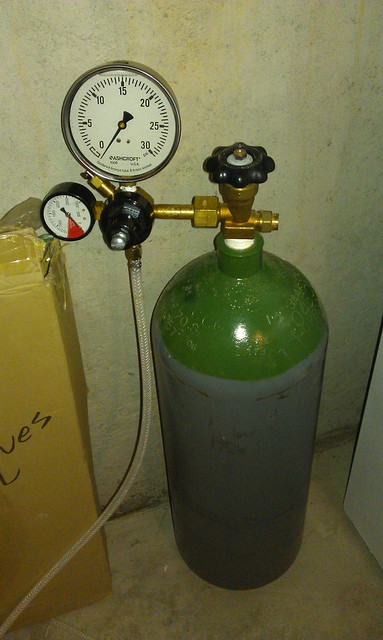haeffnkr
Well-Known Member
Hello,
I bought the Accuflex Bev-Seal line.
I read as much as I can find on this and answer vary greatly
On the group by thread there are guys using any where from 12-20 feet in length.
I have just made/kegged my first batch ever.
Details here if anyone is bored -
https://www.homebrewtalk.com/f36/1st-beer-attempt-ever-lots-pics-biab-291598/
I cut it the line to 20' and was able to get it connected to keg/tail piece...that is a job.
My beer has been on gas 9 days now....12/12.5 psi at 36-37 degrees.
The middle of my keg is about 23" below my shank.
My pour now is OK, but missing some head unless I drop the glass down several inches..and then head is about 1/2" is that normal?
I know I should wait a week before I do much tweaking since the beer is still carbing.
Are their calculators for this exact line to show my how long it should be based on my setup?
How do I know, other than keep cutting it back, if line is to long?
I guess slow and no foam is better than all foam...
thanks Kevin
I bought the Accuflex Bev-Seal line.
I read as much as I can find on this and answer vary greatly
On the group by thread there are guys using any where from 12-20 feet in length.
I have just made/kegged my first batch ever.
Details here if anyone is bored -
https://www.homebrewtalk.com/f36/1st-beer-attempt-ever-lots-pics-biab-291598/
I cut it the line to 20' and was able to get it connected to keg/tail piece...that is a job.
My beer has been on gas 9 days now....12/12.5 psi at 36-37 degrees.
The middle of my keg is about 23" below my shank.
My pour now is OK, but missing some head unless I drop the glass down several inches..and then head is about 1/2" is that normal?
I know I should wait a week before I do much tweaking since the beer is still carbing.
Are their calculators for this exact line to show my how long it should be based on my setup?
How do I know, other than keep cutting it back, if line is to long?
I guess slow and no foam is better than all foam...
thanks Kevin



